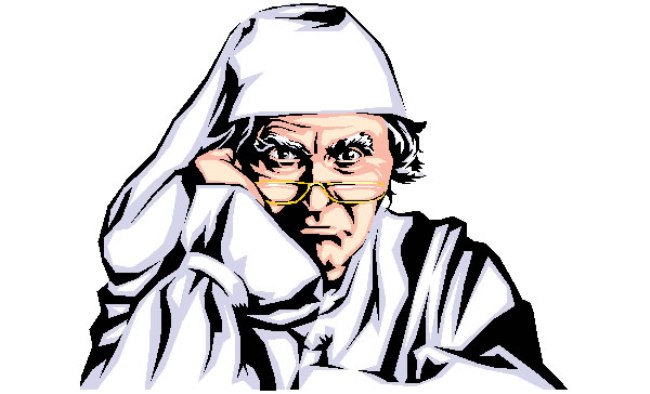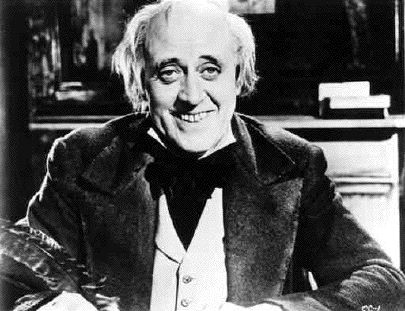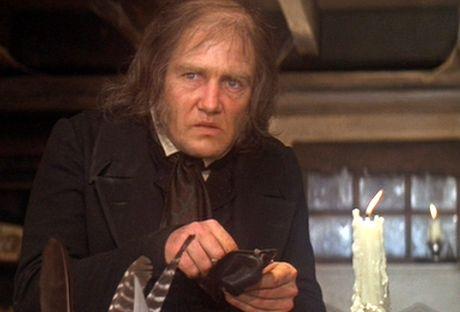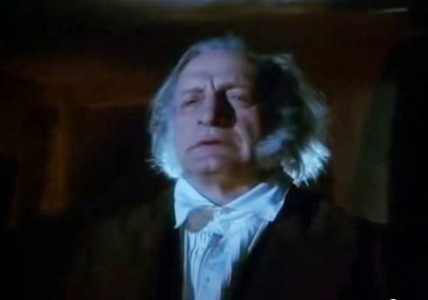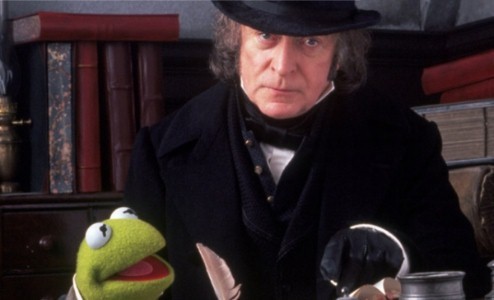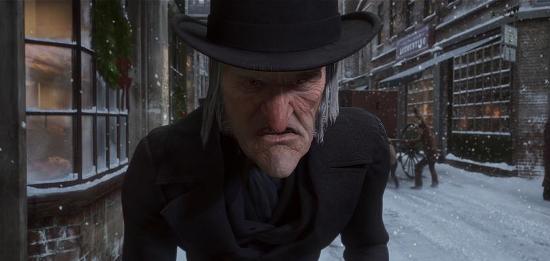Hollywood has run into the habit of reusing ideas and stories over and over again, which has led many people to believe that the industry is devoid of original ideas. While some films can feel flat and unoriginal, it is still understandable why Hollywood continues to recycle old properties. And whenever something original does appear in the film market, it will likely spawn it’s own franchise and continue the cycle once again. Many filmmakers often look to works of literature or historical documents for inspiration and they usually make an adaptation of something that has already been attempted by someone else. The most interesting thing about multiple adaptations are the different variants that we do see portrayed in the characters of the story, and how they both define and redefine the stories through the multiple versions. That is why I am starting this new series of articles where I look at characters that have made it to the silver screen multiple times through different interpretations, and examine how well they have stayed true to their roots and/or how they’ve been redefined over time.
Because we are now days away from Christmas, I thought that a worthy candidate to examine in this article would be Mr. Humbug himself, Ebenezer Scrooge. Scrooge, the main protagonist from Charles Dickens’ perrenial classic, A Christmas Carol, has been one of the most widely reused characters in cinema history. It seems like there are hundreds of cinematic versions of A Christmas Carol, all with Scrooge at the forefront, as well as many Christmas themed films that feature some Scrooge-esque character in some fashion. No matter where he turns up, Ebenezer Scrooge has almost become as recognizable a Christmas icon as Santa himself. And it’s not hard to see why. The story of a cynical, uncaring old man who hates Christmas until he is visited by three ghosts on Christmas Eve and is shown the true purpose of the holiday is a heartwarming story for anyone to enjoy at this time of year. The narrative is less about the Christmas season, and more about how we treat our fellow man; a lesson that Scrooge is in desperate need of learning. Dickens wrote the story to highlight class inequality in his time, but unlike many of his other stories, Christmas Carol has a more optimistic outlook. It’s Scrooge’s redemption that we find so inspirational and it’s no wonder why so many filmmakers have wanted to tackle this story over the years. I have chosen a few of the more notable adaptations of the character to look at and see how they have come to define the person that is Ebenezer Scrooge.
ALASTAIR SIM from A CHRISTMAS CAROL (1951)
While A Christmas Carol has been adapted many times in cinema before this 1951 British production, this was the one that really left a mark and has gone on to become a universally beloved classic. The film itself is well done and treats the source material with the respect that it deserves, but what makes it particularly memorable is the performance of actor Alastair Sim as Scrooge. Talk about someone making the role all his own. Sim’s performance is exactly what you want to bring old Ebenezer to life. He’s intimidating and cruel during his harsher earlier moments in his office, but vulnerable and sympathetic when he takes his overnight journey with the ghosts. Sim balances out both of these aspects perfectly, and always takes the role seriously. While the acting style may seem old-fashioned to today’s audiences, it still comes across as charming, and is very much a representation of the old, classic Hollywood style. No one can be sure if this is the way Charles Dickens wanted the character to be portrayed (he may have taken issue with some of the softening of the story’s darker themes), but Sim’s performance just feels right. His work in this film has been the measuring stick for every version of Scrooge that has come after, and it’s easy to see why. His version of Scrooge may not be the most interesting, or the most intense, but it is a version that probably defines the essentials of the character most clearly.
ALBERT FINNEY from SCROOGE (1970)
In between the Alastair Sim version of the character and this one, there were very few cinematic adaptations of the story. The only noteworthy adaptation in between was an animated version where Scrooge was played by Mr. Magoo. But in 1970, British filmmaker Ronald Neame took upon a lavish, musical version of Dickens classic story and cast Albert Finney in the iconic role. Now, while the film features some beautiful set pieces and portrays it’s time period very well, the movie still does have a lot of flaws that keeps it from becoming a true classic. One of the problems that I think hurts the film the most is the portrayal of Scrooge himself. Albert Finney is a fine actor, and I don’t fault him for trying here, but his performance just doesn’t feel right for the character. He portrays Scrooge more like a caricature of an old man rather than as fully-fledged human being. In Dickens novel, we come to understand that much of Scrooge’s miserliness has come from a lifetime of hardship and disappointment, which has made him cold and uncaring. Finney just boils that down to a permanent scowl and an aching back in his portrayal. While the film looks nice, it feels hollow and I think that’s the fault of the filmmakers missing the point of the story. You can make the film work with a more light-hearted tone, but it helps more when your main character feels authentic and less cartoony.
SCROOGE MCDUCK from MICKEY’S CHRISTMAS CAROL (1983)
Speaking of cartoons, Disney Animation tackled Dickens story as well with their stable of classic characters filling all the roles. Eternally optimistic Mickey Mouse was naturally cast as eternally optimistic Bob Cratchit; Goofy portrayed Scrooge’s deceased partner Jacob Marley; Jiminy Cricket stepped in as one of the Ghosts, as did Willie the Giant. But, of course the role of Scrooge had to belong to Donald Duck’s wealthy uncle, who naturally was inspired originally by the classic character. Scrooge McDuck was created by artist Carl Barks for the Donald Duck series of comic books in 1947, and surprising it took him this long to make it to the big screen. The long wait proved to be worth it, as Scrooge McDuck fills the role perfectly. Voiced by actor Alan Young, Scrooge is definitely the star of this adaptation and is even able to steal the spotlight away from the likes of Mickey Mouse himself. It’s very likely that for anyone who grew up in the last 30 years (myself included), this was the version of the classic that we first became familiar with. And that’s not a bad thing either. It is a remarkable feat by the Disney company to tell the entire story in only a 25 minute run-time, and still get the essence of the story right. I think that mainly has to do with having a Scrooge at the center that we can care about, which Scrooge McDuck indeed is. His presence here was so effective in fact that McDuck was given his own TV series, Duck Tales, which has made him one of Disney’s more popular characters in recent years.
GEORGE C. SCOTT from A CHRISTMAS CAROL (TV MOVIE) (1984)
George C. Scott is an actor known for his intensity, which he brings to every role of his whether it requires it or not. So, when this made for TV movie cast him in the role, you would think that Scott would have portrayed a very rough around the edges Scrooge. But what is surprising about his performance here is actually his restraint, which as a result is a great benefit for the adaptation as a whole. Like I mentioned before, Scrooge is a man who has gone through a lot of heartbreak and disappointment in order to get where he is, and that’s what has turned him into a miserable person. George C. Scott captures that aspect of the character much better than Albert Finney did, and for that matter, even Alastair Sim. This Scrooge proves to be the deepest and most interesting to date, because the production and the actor portraying him pull back the layers to show the man behind the rough facade. This version of the story focus a lot more on who Scrooge really is and how every moment of his life has shaped he is today, and how that knowledge can help him to change. Again, Scott treats the character with respect and dignity, which makes him all the more fascinating. It’s unusual to find a film made for television that actually has this kind of depth to it, but that’s the result of having a quality performer at it’s center. Scott could have gone over the top, but by showing restraint, he helped to redefine the way we see the character.
BILL MURRAY in SCROOGED (1988)
The great thing about adaptations is that if the story is strong enough in it’s overall themes, you can re-imagine it in any time period or setting that you want, as long as it stays true to the heart of the original intent. With the 1988 comedy Scrooged, we find the classic tale depicted in a contemporary setting, with Ebenezer Scrooge re-imagined as a callous and self-absorbed TV executive named Frank Cross, played by the always brilliant Bill Murray. Murray may not be the crotchety old man that we always associate with Scrooge, but he does perfectly capture the sharp cynicism of the character, in some very hilarious ways. The film, directed by Richard Donner, is surprisingly dark for a comedy, and is definitely not geared towards a family audience like the other films I highlighted. But thanks to Bill Murray’s excellent performance, we still get the essentials of A Christmas Carol here, particularly in the portrayal of Frank Cross’ redemption. The particular highlight of the film is Bill Murray’s long winded monologue at the end, where he interrupts his own adaptation of the classic story, which is being broadcast live on TV, to show the lesson he has learned about the holiday spirit. It’s silly and over-the-top, but man does Murray deliver it well, and the holiday spirit it inspires is infectious. This scene in particular is why the film has become a beloved holiday classic on its own, and it shows that even Scrooges in our present day can still capture the imaginations of their audience.
MICHAEL CAINE from THE MUPPETS CHRISTMAS CAROL (1992)
Charles Dickens meets the Muppets. Not a match that you would ever think would work, and I would be lying if I didn’t say that it doesn’t entirely come together perfectly here. But, The Muppets Christmas Carol does have a lot of charm and actually manages to do a little-hearted take on the source novel that still retains much of the story’s core darkness. And where I think the movie succeeds the most is in the casting of actor Michael Caine in the role of Ebenezer Scrooge. Caine’s performance manages to be as light-hearted as Albert Finney’s, but retains the restraint of George C. Scott performance. And it’s a balance that makes him a perfect fit for this sort of film. I mean c’mon; his co-stars are all Muppets. The fact that he’s able to look at these characters like they were real human beings and make it believable is just a testament to just how good of an actor he is. At the same time, Michael Caine’s performance helps to ground the production as a whole, making the film work as a worthy adaptation of Dickens’ story, for the most part. The film only suffers when it tries to inject some unnecessary modern jokes and gags into the narrative, but these are thankfully very minor. Like with Mickey’s Christmas Carol, this is a version of the story that I’m sure many people were introduced to as kids, and thanks to Caine’s stirring performance, it a version that helps to helps to stay true to the character of Ebenezer Scrooge.
JIM CARREY from A CHRISTMAS CAROL (2009)
The most recent incarnation of the story-line brought Dickens’ classic into the digital age through motion capture technology. Directed by Robert Zemekis, this film looks nice and portrays the classic Dickensian setting on a grand scale, but the motion capture technology used on the characters proves to be problematic. While it is neat to see an actors physical performance translated into a digital character like it does here, it has the unfortunate effect of making the characters look plastic and hollow. There comes a point where the characters reach what is known as the “Uncanny Valley,” where audiences sees something that looks real but they know it’s not, and as a result are repulsed by it. That’s the unfortunate problem with films like this one, but the character that works surprisingly well in this movie is Scrooge himself. It’s probably because he is being played by Jim Carrey, an actor known for his physical comedic styles, and he helps to make the character feel much more alive as a result. Jim Carrey’s performance is a welcome standout in this problematic film and hopefully it will not be forgotten even after people loose interest in the motion capture mode of film-making over time.
As you can see, there are many different ways in which you can bring a character to the big screen through multiple adaptations, and what helps them stand out from one another shows us all the many layers you can add to the same individual. Ebenezer Scrooge is fascinating not just as a Christmas icon, but also as an individual person. We all like stories about redemption, even when it’s aided by something as unlikely as visits from the supernatural, and this has been the appeal behind the story all these years. Even when you do the flipside of the story, like in It’s a Wonderful Life where a good man has to learn about his own value in order to be redeemed on Christmas Eve, we can still see the impact that this classic story has had, even when it’s not readily apparent. Thankfully there have been some great Scrooges brought to the big screen over the years. While I have a special attachment to the Scrooge McDuck version from my childhood, I nevertheless value George C. Scott’s multi-layered portrayal and Alastair Sim’s classic version of the character. And who doesn’t love it when Bill Murray lets loose in his version. Most likely we’ll be seeing old Ebenezer again on the big screen; probably sooner than later. But, for this Christmas season, I’m sure that some of these versions will definitely be on many of your holiday playlists.
